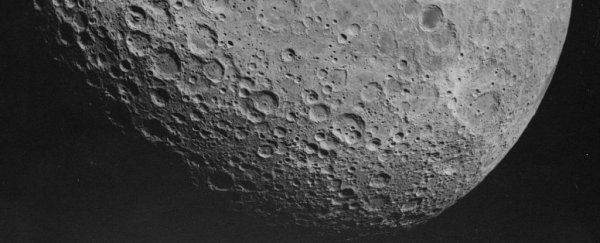A piece of space debris due to crash into the Moon in early March may not be a SpaceX rocket after all.
According to an update posted by astronomer Bill Gray, who wrote the Project Pluto software used to track near-Earth objects, the object on a collision course is not a discarded SpaceX Falcon 9 rocket stage, but a Chinese Long March 3C rocket stage.
The object is named WE0913A, and whatever its identity, its calculated trajectory remains correct. It should collide with the far side of the Moon on 4 March 2022, at around 12:25 pm UTC.
The original misidentification of WE0913A was made back in 2015, after the SpaceX rocket had delivered NASA's Deep Space Climate Observatory (DSCOVR) satellite into Earth orbit. It's standard for rocket stages to be abandoned in space after their payloads have been delivered; generally, they're designed to eventually de-orbit, burning up on re-entry into Earth's atmosphere.
WE0913A was first spotted in 2015, and was originally thought to have been an asteroid. Gray identified it after discovering that WE0913A had gone past the Moon two days after the DSCOVR mission launched, and connected the dots.
However, when he figured out that WE0913A was due to collide with the Moon, and this news spread, someone noticed something amiss. Jon Giorgini at NASA's Jet Propulsion Laboratory, which keeps track of active spacecraft, noted that DSCOVR's orbit doesn't take it close to the Moon. This raised questions about how the rocket could have passed the Moon two days after launch.
"It would be a little strange if the second stage went right past the Moon, while DSCOVR was in another part of the sky. There's always some separation, but this was suspiciously large," Gray explained.
When Giorgini reached out to him, Gray went back to his original calculations… only to discover that the object was unlikely to be the SpaceX rocket stage after all.
"In hindsight, I should have noticed some odd things about WE0913A's orbit," he explained. "Assuming no maneuvers, it would have been in a somewhat odd orbit around the Earth before the lunar flyby. At its highest point, it would be near the Moon's orbit; at its lowest (perigee), about a third of that distance. I'd have expected the perigee to be near the Earth's surface. The perigee seemed quite high."
Going back to the drawing board to find out what the object could be, he hit upon an object called 2014-065B, the booster stage of a Long March 3C rocket used to launch China's Chang'e 5-T1 mission to the Moon. This mission launched on 23 October 2014; the discarded booster stage subsequently disappeared.
Gray calculated the expected post-launch lunar flyby, and discovered that WE0913A would have flown by the Moon on 28 October 2014, at an altitude expected for a lunar transfer.
Extrapolating backwards, this matches exactly the launch time and trajectory of the Long March 3C rocket, Gray said.
"In a sense, this remains 'circumstantial' evidence," he said.
"But I would regard it as fairly convincing evidence. So I am persuaded that the object about to hit the moon on 2022 Mar 4 at 12:25 UTC is actually the Chang'e 5-T1 rocket stage."
